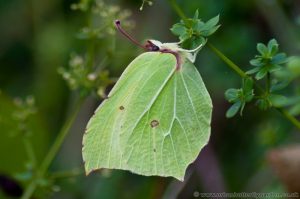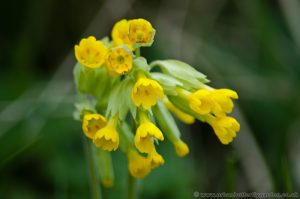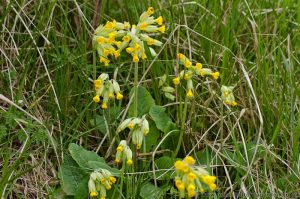about
The Speckled Wood is a dark brown butterfly with light yellow/cream markings and white dotted black eye-spots, often seen in woodland, along hedgerows and in urban parks and gardens, they are widespread and most commonly seen across Southern England, although they can be found in more northern areas.
The Speckled Wood is double brooded, with the first emerging around April – June and the second from July – September. The adult butterflies can often be seen around trees such as Ash, Oak and Hazel where they feed on honeydew from aphids.
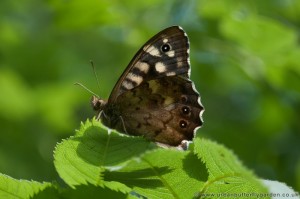
Speckled Wood side profile © Urban Butterfly Garden 2010-2012
Information
- Name: Speckled Wood (Pararge aegeria)
- Wingspan approx– 45mm
- Upper Wings – dark brown with light yellow/cream coloured markings and white dotted, black eye-spots.
- Under Wings – dark brown with cream markings on wing tips.
- Adult Nectar Plant: Ash, Oak, Hazel (aphid honeydew), Bramble, Fleabane, Ragwort, Trefoils, Coneflowers, Yellow Buddleia.
- Habitat – Woodland, Hedgerows, urban Parks and Gardens.
- Caterpillars feed on grasses:- Common Couch (Elytrigia repens), Cock’s-foot (Dactylis glomerata), False Brome (Brachypodium sylvaticum), Yorkshire-fog (Holcus lanatus).
- Photographs taken 10th – 13th August
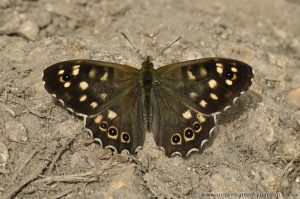
Speckled Wood Butterfly (Pararge aegeria) male resting on ground in sunshine
The male butterflies are very territorial, they will quickly chase off any rival males, the chase often involves both butterflies spiralling round and round way up into the tree tops.
On warm days the Speckled Wood Butterfly can often be seen sunbathing, sometimes choosing a open position, although as the day warms up it much prefers dappled sunlight. They will often sit low down on foliage in woodland, at the base of a hedgerow, or on a bare patch of ground, and will take flight at the slightest noise or disturbance.
During the latter part of summer Speckled Wood may be seen on Bramble, Ragwort or Fleabane, busily nectaring, building up reserves for winter Hibernation, it may also visit the gardens tempted by Sweet William, Yellow Buddleia and Coneflowers like Rudbeckia and Echinacea.
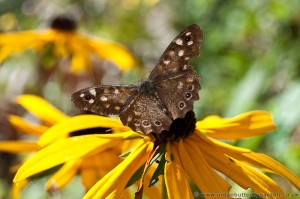
Speckled Wood Butterfly on Rudbeckia, Coneflower

